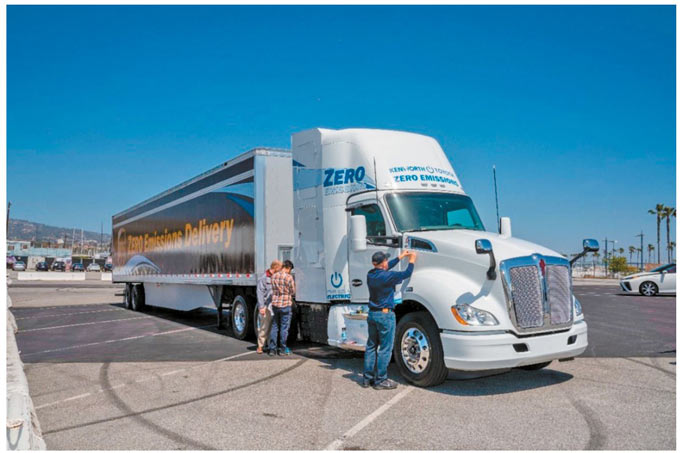Zero-emission truck
Photo/California Air Resources Board
April 4, 2025 - WASHINGTON— Republican members of Congress launched efforts to illegally undo California’s clean car standards on Thursday, undermining the Clean Air Act and the state’s authority to adopt strong emissions rules.
House Republicans Rep. John Joyce (R-Penn.), John James (R-Mich.) and Jay Obernolte (R-Calif.) introduced resolutions to repeal three California clean vehicle waivers, including Advanced Clean Cars II, using the Congressional Review Act.
The Clean Air Act allows California to enact clean vehicle standards for the state that are stricter than federal rules, but only if the EPA issues a waiver allowing it to do so. Nothing in the Clean Air Act allows the EPA to revoke a waiver it has already granted.
“This procedural trick to try and kill California’s clean air protections is sneaky and illegal,” said Maya Golden-Krasner, a Los Angeles-based attorney at the Center for Biological Diversity’s Climate Law Institute. “Transportation is California’s biggest source of smog and climate pollution. The state’s strong rules save lives and save money at the pump. The party of states’ rights should let California deal with its clean air problems, as the Clean Air Act provides.”
The Act allows Congress to revoke recently enacted federal administrative rules under certain circumstances. In a March 6 letter to Congress, the Government Accountability Office affirmed that the three EPA waivers that Congress tried to undo today are not rules that can be rejected using the CRA.
More than a dozen states follow California’s strong standards.
“California’s clean car standards are the right thing to do, and many states have the right to do it,” said Golden-Krasner. “Congress should hit the brakes on these reckless games that threaten people’s health and our planet.”
The Center for Biological Diversity is a national, nonprofit conservation organization with more than 1.8 million members and online activists dedicated to the protection of endangered species and wild places.
Source: Center for Biological Diversity








